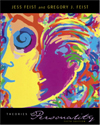
Learning Theories Rotter and Mischel: Cognitive Social Learning Theory |  |
Chapter Objectives
| 1. List Rotter’s four variables of prediction and briefly explain each. |
| 2. Discuss Rotter’s basic prediction formula and its uses. |
| 3. List and give examples of Rotter’s categories of needs. |
| 4. Discuss Rotter’s generalized expectancies and their measurement. |
| 5. Explain the difference between internal and external control and list several misconceptions regarding internal and external control of reinforcement. |
| 6. Discuss Mischel’s conditional view of personal dispositions. |
| 7. Critique Mischel’s notion of the consistency paradox. |
| 8. Discuss Mischel and Shoda’s cognitive-affective view of personality. |
| 9. List and discuss Mischel and Shoda’s cognitive-affective units. |
| 10. Discuss research on Rotter’s locus of control model. |
|
|